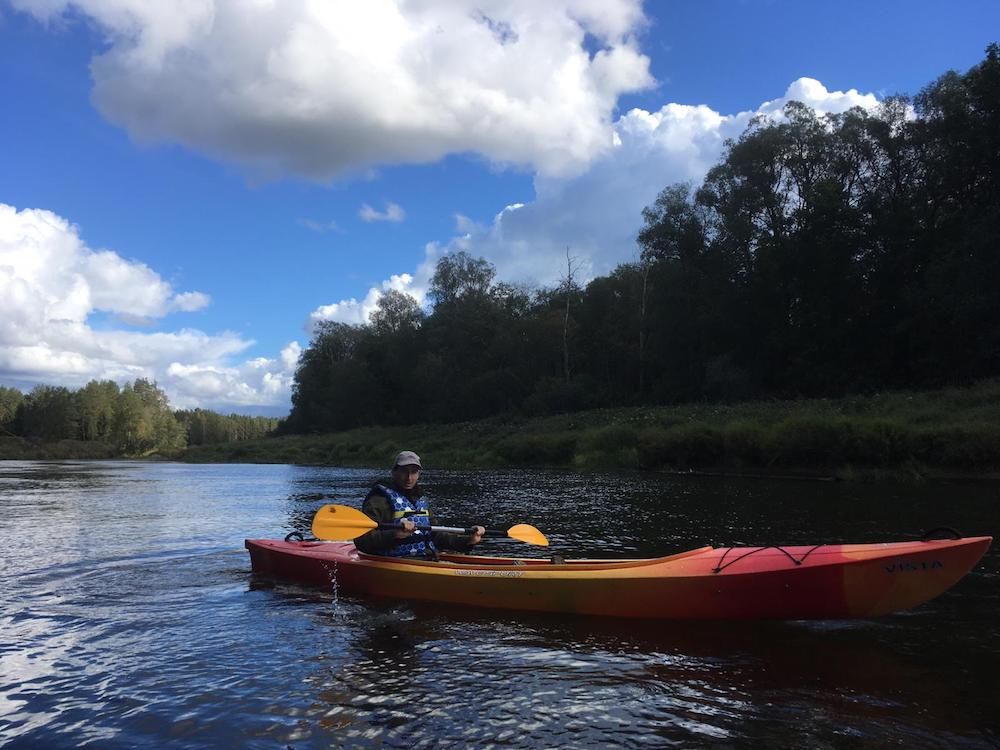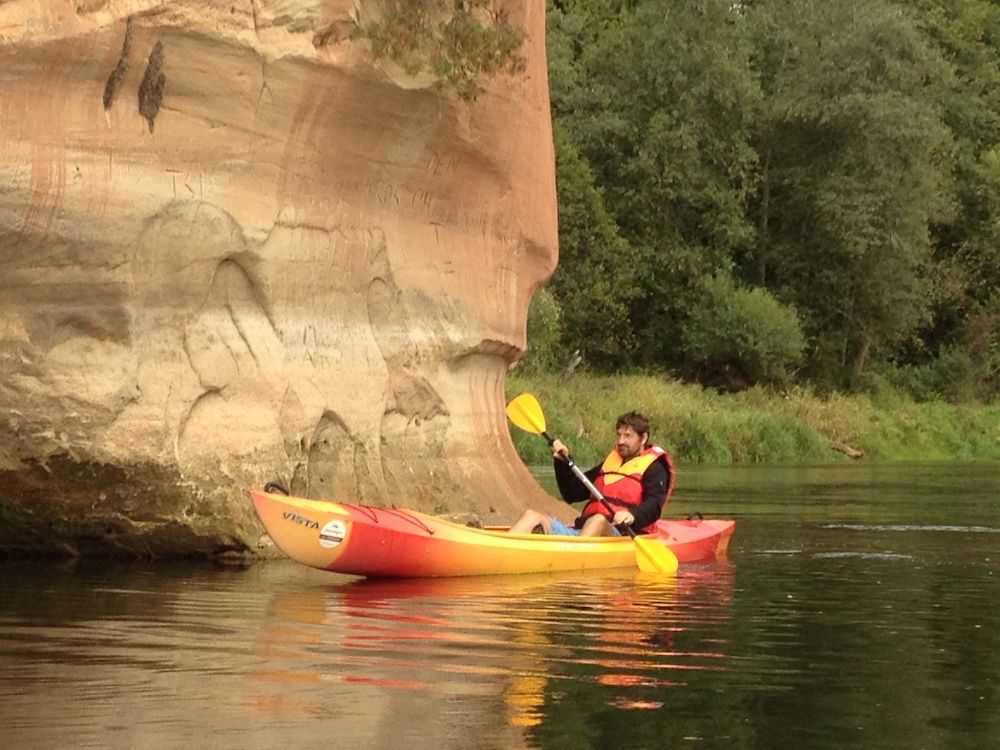by Alex Wright
The heavens open as our host Linda pulls away, leaving us alone by the side of the riverbank. It doesn’t look like stopping soon so we stand under the shelter of a nearby tree.
My friend Jules and I are on a short week’s break exploring the heart of Latvia – the Gauja National Park. Founded in 1973, the country’s first national park is easily accessible, 24 miles from the capital Riga.
The 90,000-plus hectare site is also home to all manner of flora and fauna, spectacular rock formations from the Devonian period and historic monuments, and it’s a popular spot for adventure sports too from hiking and biking to canoeing, and even skiing and bobsleigh in the winter months.
On this occasion we’ve hired a couple of kayaks to paddle down the River Gauja. If the park is Latvia’s heart then the 280-mile river that snakes through the middle is the blood that pumps through its veins.
The plan is to start halfway downstream in the industrial town of Ligatne and make our way to Sigulda – the main tourist hub – stopping at a campsite en route in Jaunzageri overnight.
We have 15 kilometres to cover this afternoon, followed by a shorter stretch the next day, but the worsening weather has put our progress in doubt.In fact we wondered if this trip was even going to happen, having set up the whole thing by email communication, which was patchy at best. But we needn’t have worried as Linda arrived to pick us up from the outskirts of town in her car towing a trailer with two kayaks and whisk us off to the river.

It turns out that Linda runs the business almost single handedly with help from her father and brother, renting out the campsite, and kayaks and inflatable and wooden rafts.
“You know how to paddle a kayak, right?” are her departing words as we stare at the big raincloud that has gathered overhead.
Five minutes later, however, the rain has subsided, so we take our opportunity, pushing off from the riverbank and floating underneath the rope bridge – the last sign of civilisation for the next few hours – downstream. We must be the only hardy souls on the river today – it’s early September and the holiday season is over. That becomes more apparent the further we go, accompanied by the occasional heron taking flight, bird song or fish splash.
As the river becomes increasingly split at points by small islands of land, we try to work out which is the deepest channel, often getting grounded and having to jump out and push ourselves. Then we notice the first traces of life – a small chair with an empty bottle of vodka next to it – obviously a prime fishing spot – and it’s not long before we see our first anglers who have waded out into the middle to try their luck.
Before long the red sign denoting the campsite that Linda told us about appears on the right and we pull up alongside the jetty. Clambering ashore, we scramble up the steep bank to our lodgings where we strip off our wet clothes and, as the only guests for the night, make ourselves at home.

But this is no ordinary campsite – there are hammocks, a hot tub and even a sauna to relax in after a hard day’s paddling. For the more active there’s a volleyball pitch and various dartboards scattered throughout the woods. There’s also a unit containing an outdoor cooking area, shower and washing machine.
After making full use of the facilities we return to the riverbank for a couple of beers, and watch the sun go down and reflect on the tranquility of the place.
The next morning we are up with the lark and ready to embark on the second leg. After breakfast we slide down the vertical slope to our kayaks and set off. With the wind in our sails after a surprisingly good night’s rest we make good time.

It’s not long before we see the red brick turret of Turaida Castle – one of Sigulda’s foremost landmarks – poking up through the pine forest on the right. As a marker of our final destination, it’s a fitting way to round off a memorable trip.
For more information on kayaking in Gauja National Park, Latvia, visit jaunzageri.lv/lv.

